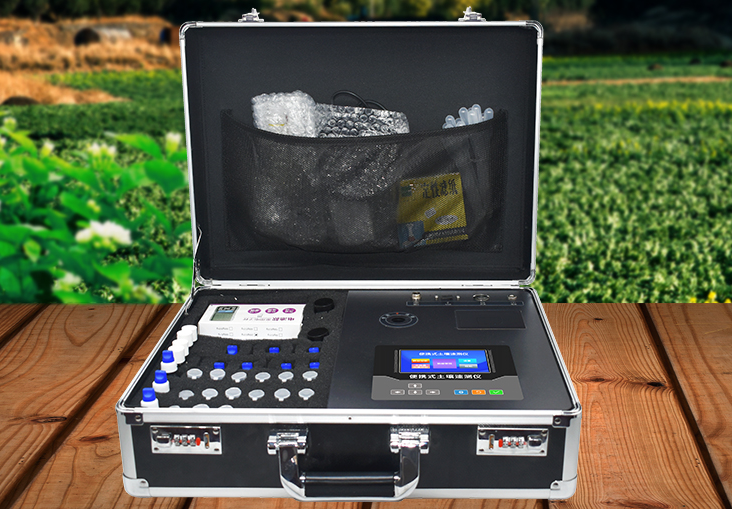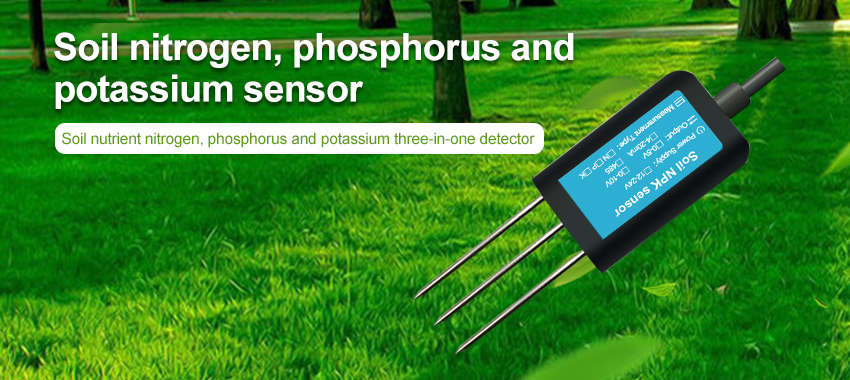Soil Nutrient Sensor

Soil nutrient sensors are instruments developed to help farmers measure and monitor various soil nutrient levels in real-time. These nutrients include nitrogen, potassium, phosphorus, and many trace elements required by plants for growth and development. These sensors can help farmers understand soil conditions better and create effective management plans that maximize crop yield while reducing costs.
How Soil Nutrient Sensors Work
Soil nutrient sensors work by sensing the amount of nutrient present in soil and sending the readings to a connected data acquisition system that converts the data into values that can be easily interpreted by farmers. This system operates with certain algorithms and scientific models to give information regarding nutrient uptake and plant growth.

Different types of sensors utilize various technologies like near-infrared spectroscopy (NIR), ion-selective electrodes (ISE), or flow injection analysis (FIA). They vary in measurement methods and cost, but they all aim to deliver reliable, real-time readings to support farmers’ decision-making process.
Benefits of Using Soil Nutrient Sensors
Targeted Fertilizer Application: Soil nutrient sensors enable precision fertilizer application where farmers administer the right type and amount of fertilizer needed based on nutrient deficiencies identified through soil sensor monitoring. Precise fertilization reduces both over-fertilization and loss of resources that would otherwise degrade the environment, which makes it an economically viable option in agriculture.
Improved Yield Prediction: With the use of soil nutrient sensors, farmers can make better cropping decisions through accurate nutrient status assessments and, consequently, improved yield predictions. As a direct result of these predictions, farmers can make decisions on which crops to plant and at what time.
Precise Irrigation Management: Precise knowledge of soil moisture level obtained through soil sensors can help farmers regulate irrigation activities on crops in different locations and depths, including overhead or subsurface drip irrigation . This ensures that crops get the right amount of water, minimizing run-off, improving permeability, and generating better yield outcomes.
Cost Optimization: Soil nutrient sensors lead to optimal utilization of resources. They enable growers to optimize inputs related to crop health, reducing over-fertilization, waste, and production Time. Additionally, reduced material cost lowers labor requirements, saving valuable time and productive expenses of both tasks and logistics.
Applications of Soil Nutrient Sensors
A. Large-Scale Farming
Using soil nutrient sensors for large-scale real-time monitoring purposes offers several benefits to farmers since the data acquired is guiding their soil management decisions. With such controlled precision agriculture, they can conserve resources, increase yields, and reduce the negative impact on the environment when applied thoroughly. These sensors are equipped with advanced data management systems such as big data analytics, Geographic Information System (GIS), and cloud computing, all realizing major decision-supporting changes in farming practices.
B. Greenhouse Monitoring
Greenhouses require constant maintenance and monitoring of environmental variables that affect plant growth, among which soil nutrition is one significant aspect. The use of soil nutrient sensors is optimal in greenhouse contexts for providing accurate and timely information concerning changes in nutrient levels for optimal plant growth. Integrated greenhouse management systems such as aquaponics also benefit from this technology, where fish provide nutrient-rich wastewater which can be recirculated into the plant’s base and correctly monitored by nutrient sensors.
C. Home Gardening
Soil nutrient sensors have been introduced as an often-affordable and easy means to regulate small scale protection that falls under home gardening. When packaged with hardware that sends information to mobile devices or computers, this system provides ease of access for individuals managing home gardens. This allows them to know when plants require nutrient supplementation and reduce the frequency and labor-intensive activities involving manual checks.
Conclusion
In conclusion, the application of soil nutrient sensors has revolutionized the agricultural sector, helping to maximize crop yield through precise and timely nutrient application and management. With these real-time measurements, agriculturalists can achieve optimum crop growth conditions while conserving resources and reducing environmental impact. The sensor-based systems produce fast and accurate data on soil nutritional content, moisture levels, temperature, and many more vital factors that affect growth and development. There is a great opportunity to increase farm productivity through the application of soil nutrient sensors for various farming methods.